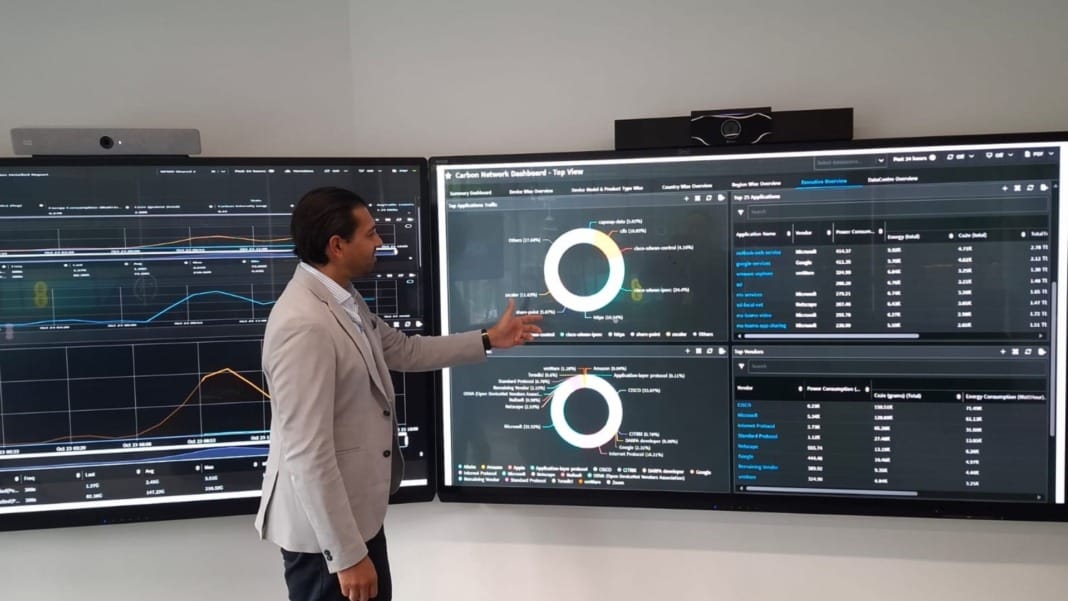BT has expanded its Carbon Network Dashboard to provide business customers with detailed insights into how their AI workloads and applications impact carbon emissions. This new capability, announced on 1 November in Singapore, allows companies to monitor electricity consumption at an individual workload and application level, enabling them to make adjustments to manage power use and emissions in their networks and data centres as they scale up artificial intelligence (AI) usage.
The updated dashboard offers enhanced visibility that supports businesses in optimising their infrastructure to meet sustainability goals, helping them handle the unique challenges that AI can bring to network and data centre operations.
Addressing AI’s impact on networks and emissions
AI applications can create sudden, unpredictable demands on network and data centre resources, leading to rapid increases in bandwidth usage. Traditional infrastructure, designed for steady workloads, often struggles with these surges, which can overload network devices or servers, cause performance issues, and result in wasted electricity through overheating. This situation presents significant challenges for companies aiming to reduce carbon emissions.
BT’s Carbon Network Dashboard now allows customers to monitor electricity use associated with specific workloads and applications, including AI. By linking power consumption data to individual traffic patterns, the dashboard gives companies the information they need to optimise infrastructure and manage the energy demands of AI applications.
Tools for optimising AI workloads
The enhanced dashboard is part of BT’s sustainable network design and refresh service, helping customers reconfigure their networks to meet the demands of AI. Through this service, BT can support companies in altering network design, increasing capacity, and optimising AI applications to improve energy efficiency. BT also assists customers in developing distributed architectures, moving components of AI closer to end-users and devices, reducing the load on central infrastructure.
The new features in BT’s Carbon Network Dashboard include the latest NetFlow plug-in, which enhances the system’s ability to detect and manage traffic headed to colocation or public cloud services. This improvement allows companies to prioritise which workloads to optimise, ensuring network devices operate efficiently and within design limits, with the flexibility to accommodate the growth of AI workloads without excessive energy use.
The dashboard now collects power usage data from a wider array of devices and vendors, including SD-WAN equipment, servers, as well as WAN and LAN devices, broadening its scope for comprehensive infrastructure monitoring.
Expanded energy-saving options
In addition to monitoring tools, BT has added new energy-saving capabilities to the Carbon Network Dashboard. These include integration with V-App IoT builder to manage power use in wireless access points and automated controls to disable power over ethernet (PoE) ports when they are not in use. The dashboard also provides sustainable replacement recommendations for outdated devices, supporting customers in reducing carbon emissions across their digital infrastructure.
Sarwar Khan, Sustainability Director for BT Business, underscored the importance of managing AI’s environmental impact, saying, “AI has incredible potential but if not deployed thoughtfully could place unpredictable demands on customers’ digital infrastructure, causing surges in electricity use and carbon emissions. BT is committed to helping customers innovate to achieve sustainable growth. With our Carbon Network Dashboard, we can help them adopt AI at scale while optimising their infrastructure to achieve their decarbonisation goals. It’s a great example of how BT has their back.”
BT’s updated Carbon Network Dashboard empowers businesses to adopt AI responsibly, providing tools to monitor and manage energy use. These capabilities help companies balance innovation with sustainability goals, enabling them to meet carbon reduction targets while benefiting from AI advancements.





